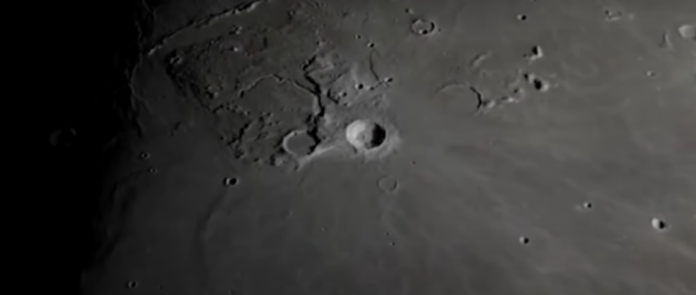Researchers find a 330ft-deep lava tube near the Apollo 11 landing site, offering a shield against harsh lunar conditions
Scientists have discovered a significant cave on the Moon, an empty lava tube, close to the Apollo 11 landing site in the Sea of Tranquillity. This groundbreaking find raises the possibility of establishing a base for future astronauts.
An international research team, analyzing radar images from NASA’s Lunar Reconnaissance Orbiter (LRO), identified the first accessible lava tube beneath the Moon’s surface. The discovery was published in the journal Nature Astronomy. Co-author Lorenzo Bruzzone explained, “These caves have been theorized for over 50 years, but it is the first time ever that we have demonstrated their existence.”
The researchers initially obtained radar images in 2010, detecting a pit in the Mare Tranquillitatis. However, limited technology at the time prevented full analysis. Recently, the team reanalyzed the data using advanced signal processing techniques, revealing radar reflections that confirmed an underground channel, identified as an empty lava tube.
The cave, located at least 130 meters underground, measures roughly 45 meters wide and at least 30 meters long. Bruzzone highlighted the significance of this find: “This discovery provides the first direct evidence of an accessible lava tube under the surface of the Moon.”
This cave holds promise for future space missions. NASA-funded scientists previously determined that shaded areas within lunar pits maintain a stable temperature of about 63 degrees Fahrenheit (17 degrees Celsius). These tunnels could offer a thermally stable environment, protecting astronauts from the Moon’s extreme surface temperatures, which can reach 260 degrees Fahrenheit (127 degrees Celsius) during the day and plummet to negative 280 degrees Fahrenheit (negative 173 degrees Celsius) at night.
Moreover, these caves could shield astronauts from cosmic and solar radiation, which are over 100 times stronger on the lunar surface than on Earth. This radiation exposure can damage DNA and alter the biochemistry of cells and tissues.
David Paige, co-author of a 2022 paper on lunar caves, emphasized their potential: “Humans evolved living in caves, and to caves, we might return when we live on the Moon.”
NASA’s Lunar Reconnaissance Orbiter has provided extensive data, including a three-dimensional map of the Moon, aiding in identifying future landing sites and resources such as ice deposits in polar craters.
Analysis
Political
The discovery of the Moon cave could have substantial political implications, particularly in the context of international space exploration and competition. As nations like the United States, China, and Russia ramp up their lunar missions, the identification of a potential habitat on the Moon strengthens the strategic advantage of countries leading in space technology. This finding could accelerate the timeline for establishing a permanent human presence on the Moon, prompting governments to increase funding for lunar programs. It may also spur international collaborations or, conversely, heighten competition as nations vie for control over key lunar sites.
Social
Socially, the discovery mirrors humanity’s enduring fascination with space exploration and the possibility of living beyond Earth. It reignites public interest and inspires future generations to engage in STEM fields. The idea of humans potentially living in Moon caves captures the imagination and reflects our innate drive to explore and adapt to new frontiers. Moreover, it could influence societal debates on space colonization’s ethical and practical implications, including the environmental impact on extraterrestrial bodies and the distribution of space resources.
Racial
From a racial perspective, the discovery and subsequent lunar missions highlight the need for diversity and inclusion in space exploration. Historically, space programs have been dominated by a narrow demographic, but as humanity prepares for long-term missions and potential colonization, it is crucial to ensure that space exploration represents all of humanity. This involves promoting the participation of underrepresented groups in space agencies, science, and engineering fields, and ensuring that the benefits of space exploration are equitably distributed.
Gender
The Moon cave discovery also underscores the importance of gender diversity in space exploration. As missions become more complex and involve long-term habitation, the contributions of women in science, engineering, and leadership roles are essential. Ensuring gender equality in space programs can lead to more innovative solutions and a more inclusive approach to space colonization. This discovery can serve as a catalyst for further promoting and supporting women in aerospace and related fields.
Economic
Economically, the discovery of a potentially habitable cave on the Moon opens new avenues for investment and development in space industries. The prospect of establishing a lunar base could spur growth in sectors such as construction, robotics, and materials science, as technologies are developed to adapt to the harsh lunar environment. It may also attract private sector investment, with companies seeking to participate in lunar exploration and habitation projects. The economic benefits extend to potential resource extraction, including mining for water, minerals, and other materials that could support not only lunar colonies but also missions to Mars and beyond.
